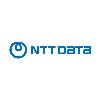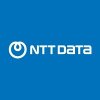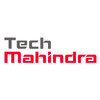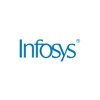
i
Capgemini
Proud winner of ABECA 2024 - AmbitionBox Employee Choice Awards
Filter interviews by
Capgemini SAP Fi Fscm Consultant Interview Questions and Answers
Capgemini SAP Fi Fscm Consultant Interview Experiences
1 interview found
I applied via Recruitment Consulltant and was interviewed before May 2022. There were 2 interview rounds.

(3 Questions)
- Q1. Relevance of Partner Bank type in for Supplier Payments
- Ans.
Partner Bank type is relevant for Supplier Payments as it determines the payment method and currency.
Partner Bank type determines the payment method and currency for supplier payments
Different partner bank types may have different payment methods and currencies
For example, a domestic partner bank may only support local currency payments while an international partner bank may support multiple currencies
Choosing the rig...
- Q2. What is With holding tax and what are the options available for enhancements .
- Ans.
Withholding tax is a tax deducted at source from payments made to vendors or contractors. Enhancements include customizing tax codes and rates.
Withholding tax is deducted from payments made to vendors or contractors
It is deducted at source and paid directly to the tax authorities
Enhancements include customizing tax codes and rates based on country-specific regulations
Options for enhancements include customizing withhol...
- Q3. What is Dunning and BTE usage in Dunning
- Ans.
Dunning is the process of reminding customers of overdue payments. BTEs are used to customize dunning notices.
Dunning is a process of sending reminders to customers who have overdue payments
BTEs (Business Transaction Events) are used to customize dunning notices
BTEs can be used to add custom fields or logic to the dunning process
For example, a BTE can be used to add a custom message to the dunning notice based on the c
Interview Preparation Tips
Interview questions from similar companies

I applied via Referral and was interviewed in Oct 2024. There were 3 interview rounds.
(2 Questions)
- Q1. Self interduction
- Q2. Subject reated question
(2 Questions)
- Q1. Self interduction
- Q2. Content moderater
(2 Questions)
- Q1. Self interduction
- Q2. Content morderter
Interview Preparation Tips

I applied via Walk-in and was interviewed in Sep 2024. There were 2 interview rounds.
What is aptitude text? How much rounds?
(2 Questions)
- Q1. Is very simple in this round.
- Q2. Best experience in this round.

I applied via Naukri.com and was interviewed in Oct 2024. There were 2 interview rounds.
(1 Question)
- Q1. What are account type s on fico?
- Ans.
Account types in FICO include asset accounts, liability accounts, equity accounts, revenue accounts, and expense accounts.
Asset accounts represent resources owned by the company, such as cash, inventory, and equipment.
Liability accounts represent obligations owed by the company, such as loans and accounts payable.
Equity accounts represent the owner's stake in the company.
Revenue accounts track income generated by the c...
(1 Question)
- Q1. Explain p2p process?
- Ans.
P2P process stands for Procure to Pay process, which involves all steps from requisitioning goods/services to making payment.
Requisitioning: Requesting goods/services needed by the organization.
Vendor selection: Choosing a vendor to fulfill the requisition.
Purchase order creation: Formalizing the agreement with the vendor.
Goods receipt: Receiving the goods/services from the vendor.
Invoice verification: Checking the inv...
Interview Preparation Tips

I applied via Walk-in and was interviewed in Mar 2024. There was 1 interview round.
(1 Question)
- Q1. Ptp process otc process
Interview Preparation Tips

(1 Question)
- Q1. What is tuff incident you solved recently?
- Ans.
I recently solved a complex issue related to asset accounting integration in SAP FICO.
Identified discrepancies in asset accounting data
Analyzed integration settings between asset accounting and FI modules
Implemented necessary corrections to ensure accurate financial reporting


(7 Questions)
- Q1. What do you about know sap fico
- Ans.
SAP FICO is a module in SAP ERP that deals with financial accounting and controlling.
SAP FICO is an acronym for SAP Financial Accounting and Controlling.
It is a module in SAP ERP that integrates financial accounting and controlling processes.
It helps organizations manage their financial transactions, financial reporting, and cost controlling.
SAP FICO includes sub-modules like General Ledger Accounting, Accounts Payable...
- Q2. What is posting period varint
- Ans.
Posting period variant is a configuration setting that controls the posting periods for financial transactions.
Posting period variant determines the open and closed periods for posting financial transactions.
It is assigned to a company code and controls the posting periods for all financial modules.
It can be customized to meet the specific needs of the organization, such as defining special periods for year-end closing...
- Q3. What asset class and who made asset class
- Ans.
Asset class is a categorization of assets based on their characteristics. It is made by the company's management.
Asset class is used to group similar assets together for reporting purposes
It helps in tracking and managing assets efficiently
Examples of asset classes include buildings, machinery, vehicles, and furniture
Asset classes are created by the company's management based on their business needs
- Q4. What are the type of tolerance group in sap
- Ans.
There are three types of tolerance groups in SAP: payment, invoice, and purchasing.
Payment tolerance group controls the maximum amount of difference between the invoice and payment.
Invoice tolerance group controls the maximum amount of difference between the invoice and purchase order.
Purchasing tolerance group controls the maximum amount of difference between the purchase order and goods receipt.
Each tolerance group i...
- Q5. What is posting key and how to deater mined the posting key
- Ans.
Posting key is a two-digit numerical code used in SAP FICO to determine the type of transaction and the general ledger account to be posted.
Posting key is used to control the entry of accounting documents in SAP FICO.
It determines the type of transaction, such as debit or credit, and the general ledger account to be posted.
Posting keys are predefined in SAP and can be customized as per business requirements.
The posting...
- Q6. What is cash journal and how many steps of cash journal
- Ans.
Cash journal is a special journal used to record all cash transactions in a company.
Cash journal is used to record all cash transactions in a company
It is a special journal that is used to manage cash transactions
Cash journal is used to record all incoming and outgoing cash transactions
There are 3 steps in cash journal: creating a cash journal, posting transactions, and closing the cash journal
- Q7. What is documents types
- Ans.
Document types are categories of documents used in SAP to classify and organize business transactions.
Document types are assigned to each transaction in SAP to identify the type of transaction and its purpose.
Examples of document types include vendor invoices, customer invoices, purchase orders, and payment requests.
Document types are used to control the posting of accounting entries and to determine the document numbe...
(7 Questions)
- Q1. What is account payable
- Ans.
Account payable is the amount owed by a company to its suppliers or vendors for goods or services received but not yet paid for.
It is a liability account in the balance sheet
It represents the amount owed to suppliers or vendors
It includes invoices received but not yet paid
It is an important component of working capital management
Example: A company receives a bill for $10,000 from a supplier for raw materials purchased....
- Q2. What is account receivable
- Ans.
Account receivable is the amount of money owed to a company by its customers for goods or services sold on credit.
It is a current asset on the balance sheet
It represents the amount of money that a company expects to receive from its customers
It is recorded as a debit entry in the company's books
Examples include outstanding invoices, credit notes, and bad debts
- Q3. What are the type of chart of accounts
- Ans.
There are three types of chart of accounts: Operating chart of accounts, Group chart of accounts, and Country-specific chart of accounts.
Operating chart of accounts is used for daily accounting activities and is assigned to a company code.
Group chart of accounts is used for consolidating financial statements of multiple company codes.
Country-specific chart of accounts is used to meet legal and reporting requirements sp...
- Q4. How to configuration AAP
- Ans.
AAP configuration involves setting up the Asset Accounting module in SAP FICO.
Define chart of depreciation
Create asset classes
Specify depreciation areas
Assign asset classes to depreciation areas
Define screen layout rules
Configure number ranges for asset master records
Set up depreciation keys
Define tax depreciation areas
Configure integration with other modules
- Q5. What are the level of configured down payment
- Ans.
There are three levels of configured down payment: partial, final, and intermediate.
Partial down payment is made before the delivery of goods or services.
Final down payment is made after the delivery of goods or services.
Intermediate down payment is made during the delivery of goods or services.
Each level can have different percentages and due dates.
Down payment configuration can vary based on company policies and cust
- Q6. What are the process of desperation calculated
- Ans.
Desperation is not a process that can be calculated. Did you mean depreciation?
Desperation cannot be calculated as it is an emotion.
Depreciation is the process of allocating the cost of an asset over its useful life.
Depreciation can be calculated using various methods such as straight-line, declining balance, and sum-of-the-years' digits.
Depreciation is important for financial reporting and tax purposes.
For example, a ...
- Q7. What is product costing
- Ans.
Product costing is the process of determining the cost of producing a product or service.
It involves identifying all the costs associated with producing a product or service, including direct and indirect costs.
Direct costs include materials, labor, and other expenses directly related to production.
Indirect costs include overhead expenses such as rent, utilities, and administrative costs.
Product costing is important fo...
Interview Preparation Tips
Skills evaluated in this interview

(1 Question)
- Q1. What is otc process
- Ans.
OTC process stands for Order to Cash process, which involves all the steps from receiving an order to receiving payment.
OTC process starts with receiving an order from a customer.
It involves order processing, fulfillment, shipping, and invoicing.
The final step is receiving payment from the customer.
It is a key process in ensuring customer satisfaction and revenue generation.
Example: A customer places an order online, t...

(2 Questions)
- Q1. Pricing procedure
- Ans.
Pricing procedure in SAP MM determines the conditions for pricing materials and services in procurement processes.
Pricing procedure is a set of condition types that are used to determine the prices of materials and services in purchase orders.
It is configured in customizing and assigned to a purchasing organization.
The pricing procedure is determined based on the document type, vendor, and other factors in the purchase...
- Q2. Release strategy
- Ans.
Release strategy in SAP MM determines the approval process for purchasing documents.
Release strategy is defined based on document type, value, and other criteria.
It involves setting up release codes, release groups, and release indicators.
Example: A purchase order above $10,000 may require approval from a manager with release code 'A'.
Interview Preparation Tips
Skills evaluated in this interview

I applied via Recruitment Consulltant and was interviewed in Aug 2022. There were 2 interview rounds.

(4 Questions)
- Q1. Om,pa,pt,py questions ask on pcr,schema knowledge
- Q2. Tell about qualification,your background, various methods of preparing organisation structure
- Ans.
Qualification, background and methods of preparing organization structure
I have a degree in Human Resource Management and 5 years of experience as an SAP HCM Functional Consultant
I have worked with various clients to design and implement organization structures based on their business needs
Methods of preparing organization structure include top-down, bottom-up, and matrix approaches
Top-down approach involves starting w...
- Q3. Ask about wage types pcr function why pcr used today
- Q4. I told pcr save time as we not have to go through stages ask how you manage family and job
Interview Preparation Tips
be confident,be fair before panel
Capgemini Interview FAQs
Tell us how to improve this page.
Capgemini Interviews By Designations
- Capgemini Analyst Interview Questions
- Capgemini Consultant Interview Questions
- Capgemini Software Engineer Interview Questions
- Capgemini Senior Consultant Interview Questions
- Capgemini Associate Consultant Interview Questions
- Capgemini Senior Analyst Interview Questions
- Capgemini Software Developer Interview Questions
- Capgemini Senior Software Engineer Interview Questions
- Show more
Interview Questions for Popular Designations
- Fsc Manager Interview Questions
- SAP Fico Consultant Interview Questions
- SAP MM Functional Consultant Interview Questions
- Associate SAP Fico Consultant Interview Questions
- SAP SD Functional Consultant Interview Questions
- SAP Abap Consultant Interview Questions
- SAP Consultant Interview Questions
- SAP MM Consultant Interview Questions
- Show more
Capgemini SAP Fi Fscm Consultant Interview Process
based on 1 interview
Interview experience
Interview Questions from Similar Companies
Fast track your campus placements
Capgemini SAP Fi Fscm Consultant Reviews and Ratings
based on 1 review
Rating in categories
|
Consultant
55.1k
salaries
| ₹5.2 L/yr - ₹17.5 L/yr |
|
Associate Consultant
50.8k
salaries
| ₹3 L/yr - ₹11.8 L/yr |
|
Senior Consultant
46k
salaries
| ₹7.4 L/yr - ₹24.5 L/yr |
|
Senior Analyst
20.8k
salaries
| ₹2 L/yr - ₹7.5 L/yr |
|
Senior Software Engineer
20.1k
salaries
| ₹3.5 L/yr - ₹12.4 L/yr |

Wipro

Accenture

Cognizant

TCS
- Home >
- Interviews >
- Capgemini Interview Questions >
- Capgemini SAP Fi Fscm Consultant Interview Questions












